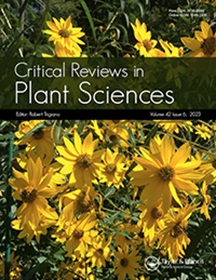Emerging Functions of Plant Serine/Arginine-Rich (SR) Proteins: Lessons from Animals
IF 6
2区 生物学
Q1 PLANT SCIENCES
引用次数: 15
Abstract
Abstract Serine/arginine-rich (SR) proteins are widely found in higher eukaryotes, including metazoans and plants. They form a major family of essential splicing factors that function in both constitutive splicing (CS) and alternative splicing (AS). Some SR proteins can also shuttle between the nucleus and cytoplasm and have roles beyond splicing. The activities of SR proteins are required for many living organisms to maintain normal growth and development. Although SR genes have been identified in numerous plants, they are less studied than those found in animals. The results of existing research suggest that plant SR proteins share many similar properties with their animal counterparts. However, plants generally have a higher number of SR proteins that display largely redundant functions under normal conditions but participate in specific stress responses. Moreover, many animal and plant SR genes are alternatively spliced and can be regulated by themselves or other SR proteins. These AS events, often coupled to nonsense-mediated decay (NMD), enable a mechanism for protein amount control under different conditions but sometimes also lead to translated protein isoforms with different functions. Here, we summarize the key findings of SR proteins in animals and plants and compare the essential characteristics of SR studies in these two research areas.植物富含丝氨酸/精氨酸(SR)蛋白的新功能:来自动物的教训
摘要富含丝氨酸/精氨酸(SR)的蛋白质广泛存在于高等真核生物中,包括后生动物和植物。它们形成了一个主要的基本剪接因子家族,在组成剪接(CS)和选择性剪接(AS)中发挥作用。一些SR蛋白也可以在细胞核和细胞质之间穿梭,并具有剪接之外的作用。SR蛋白的活性是许多生物体维持正常生长和发育所必需的。尽管SR基因已经在许多植物中被鉴定,但与动物相比,它们的研究较少。现有研究结果表明,植物SR蛋白与动物SR蛋白具有许多相似的特性。然而,植物通常具有更高数量的SR蛋白,这些蛋白在正常条件下表现出很大程度的冗余功能,但参与特定的应激反应。此外,许多动物和植物SR基因是选择性剪接的,并且可以由其自身或其他SR蛋白调节。这些AS事件通常与无义介导的衰变(NMD)相结合,能够在不同条件下控制蛋白质量,但有时也会导致具有不同功能的翻译蛋白质亚型。在这里,我们总结了SR蛋白在动物和植物中的关键发现,并比较了这两个研究领域SR研究的基本特征。
本文章由计算机程序翻译,如有差异,请以英文原文为准。
求助全文
约1分钟内获得全文
求助全文
来源期刊
CiteScore
12.90
自引率
1.40%
发文量
15
审稿时长
>12 weeks
期刊介绍:
Critical Reviews in Plant Sciences focuses on presenting in-depth and up-to-date reviews of timely and/or cutting-edge subjects in the broad discipline of plant science, ranging from molecular biology/biochemistry through the areas of cell biology, plant pathology and physiology, genetics, classical botany, and ecology, to practical agricultural applications. Articles in the journal provide an up-to-date literature base for researchers and students, pointing the way towards future research needs. The journal is also a significant source of credible, objective information to aid decision makers at all levels.

 求助内容:
求助内容: 应助结果提醒方式:
应助结果提醒方式:


